Lockdown during Covid-19, a late stage pancreatic cancer diagnosis, a friend unable to return to the UK and the simple science of probiotics vastly improving chemotherapy survival rates led to only one thing: we needed to get fermenting in much bigger volume in our Thai kitchen, to help our friend ASAP. Which meant I needed to magic up a new fermenting system with what I am able to buy during this limited shopping lockdown period.
I WANT another BIG, straight clear glass pot; the old one tragically & recently broken by a careless being (housemaid, child or cat?) who never quite owned up. But all the shops which might sell something remotely like a cylindrical hotel size clear glass flower vase are closed.
So what do I need for fermenting? Glass or ceramic only, must be cylindrical, able to hold water and pretty big (as in holding 3-5 liters). Hmmmmm..... ??? Inexpensive is a requirement right now too, as we're seriously-cash-tight without income, and need at least 2 fermenting pots. Why cylindrical? It's important in a good lacto-ferment to push all the vegetables etc down under the brine - a small plate on top pushed down is superb and incredibly effective, but only works if your fermenting pot has straight sides.
Mothers usually have answers like this. And I had my Aha!!! moment shortly after chatting with mine. She was telling me how in Holland the sauerkraut had always been traditionally made in big wooden barrels, or in very large ceramic pots with wooden tops. And suddenly the answer flashed into my head!
Water lilies and lotus. They are everywhere in Thailand, where I live, in nice big ceramic pots with no drainage holes. 😀 I prayed as we drove to Talaad Kam Thian (the huge plant market in Chiang Mai) that the shops selling glazed plant pots would be open. Many weren't but in the end, I found ONE. And one was all I needed.
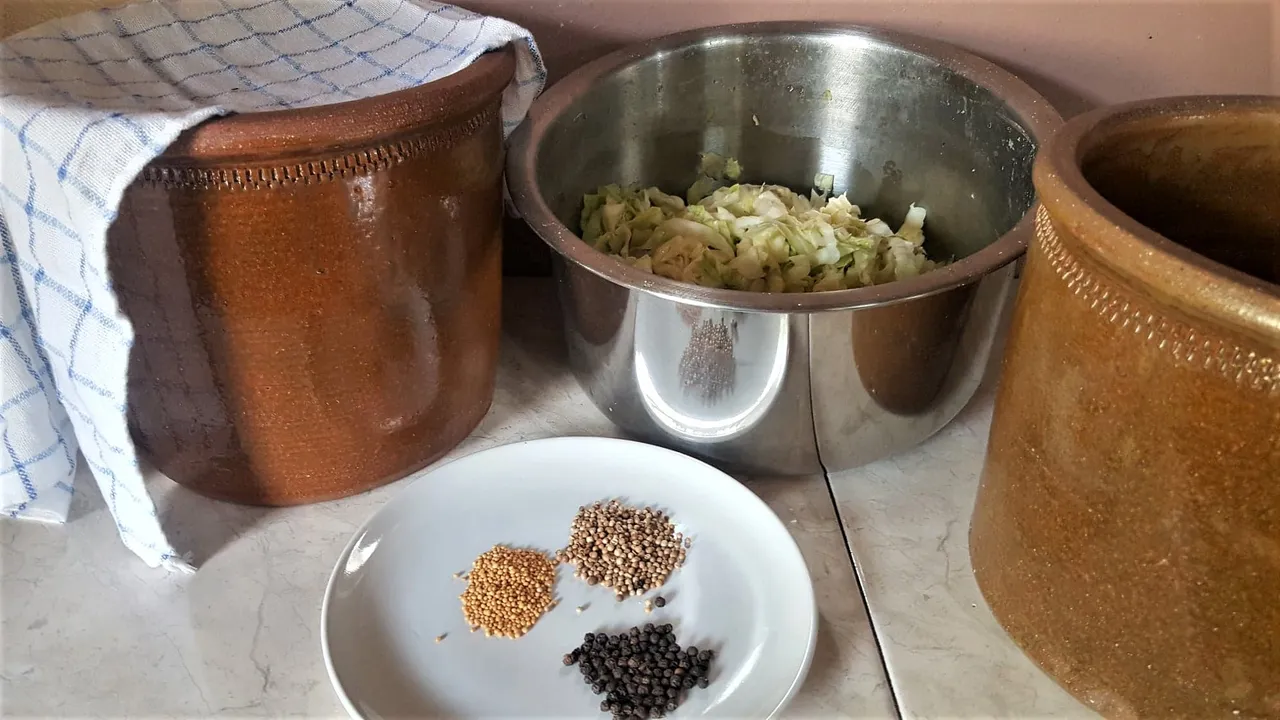
I scored x 2 glazed plant pots (no holes & designed to hold water plants) for 90 baht each - about USD $2.80 each. As you can see in relation to the 5L stainless pot in the middle, they probably hold at least 7 liters each. Man are they heavy!
I mixed the chopped cabbage I had wilted and salted overnight with my spices. How much salt? I use about 2 tablespoon of natural mineral salt (please, no cheap crap iodized salt!) for 3 whole organic cabbages. Add my 1 cup of pure (no chlorine) tap water, and leave to soak and wilt overnight.
What spices do I add? For this deliberately PLAIN sauerkraut (our friend is sick and has no appetite for my usually spicy kimchi) I used mustard seeds, coriander seeds and whole black pepper.
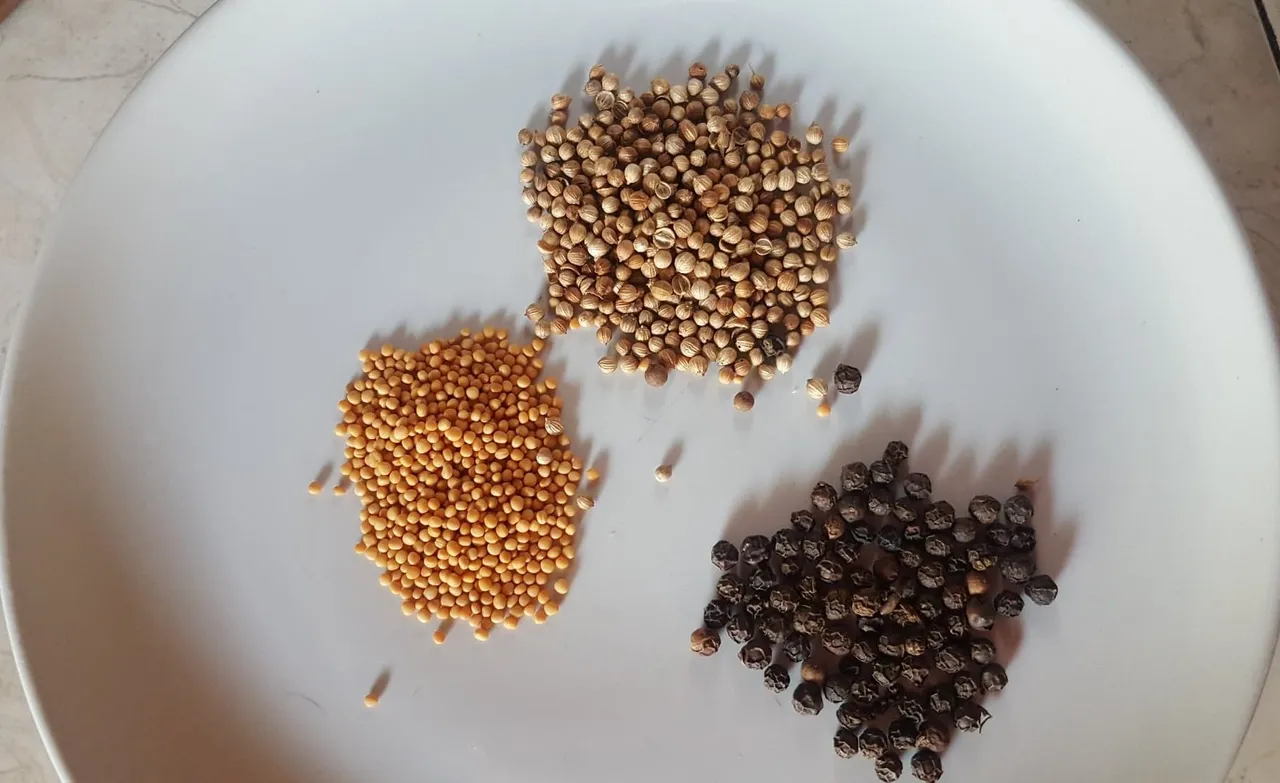
- coriander seeds, not just for flavor but because they are common in Ayurveda to aid in digestion.
- black pepper to increase bioavailability
- mustard seeds - partly for flavor and also because they're super high in selenium and magnesium.
Together they make for flavorful but not spicy, which is really important when you are fermenting for a very sick person. I used about 1 tablspoon of each for my 3 cabbages.
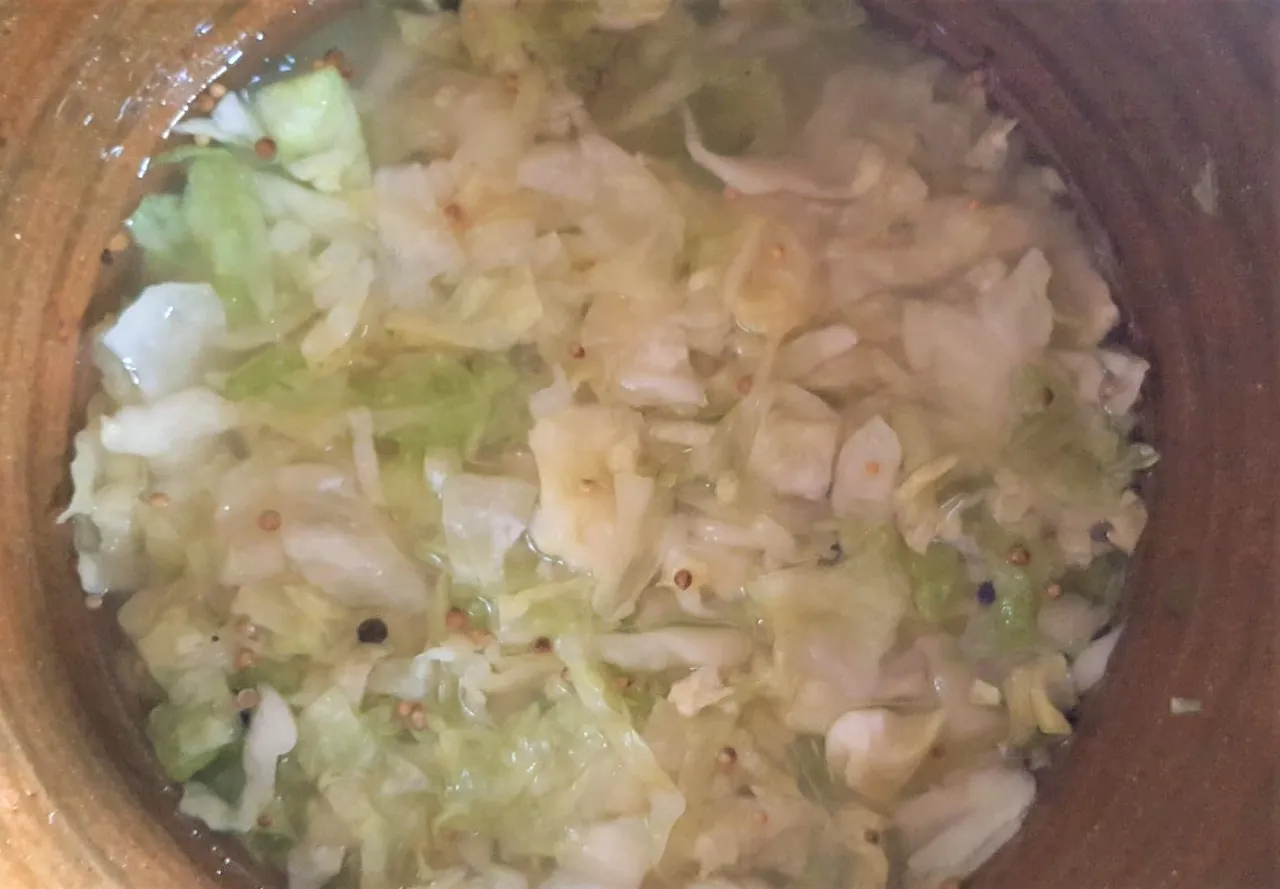
Next? Make a fist (with clean hands), pack it down hard and then cover with an upturned plate, so that ALL the cabbage stays under the brine.

This MATTERS a LOT!! It will keep the fermentation 100% anaerobic and clean - not stinky at all! And ensure the best possible result.
Cover with a clean cotton cloth with a loose enough weave to breathe, and DATE it.
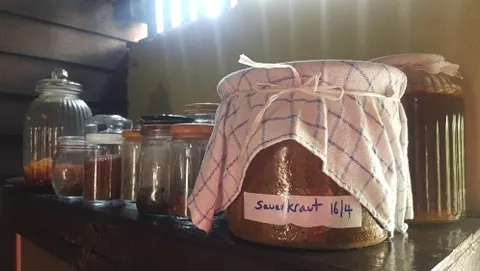
How long and where to ferment? Leave it in a WARM place. In my Thai kitchen, where the average daytime indoor temperature is about 35-40C, I put it up at eye height on a shelf where it won't be disturbed. And in a spot that's well ventilated (so my kitchen doesn't smell of cabbage). At those temperatures, it will be ready in 5-7 days. In a much cooler western environment, you may need to leave it for 2-4 or even 6 weeks.
Generally, fermentation is best left completely undisturbed. No stirring, tasting, prodding. Which is why I much prefer a clear glass fermenting pot - where I can easily SEE if the fermentation is still active (by the presence of small gas bubbles being released) or finished (when you see no bubbles at all). Luckily, I've been doing this for YEARS and KNOW when it's done. And for now, my ceramic pots are just great.
After lockdown ends, I will go and magic up some new big glass cylindrical vases and send these off to the garden with papyrus or lotus in them.
So back to the chemotherapy.
It's hard to say what you would do when someone gives YOU the "you have 3 months at best" chat. What I have learned is not to judge. And to read a lot.
I came across a study many years ago which has some really useful knowledge for people who choose to have chemotherapy:
Cancer research has been righteously and successfully focused on prevention, early detection and identification of specific molecular targets that distinguish the malignant cells from the neighboring benign cells1. However, a major clinical challenge concerns how we can reduce lethal tissue injury caused by intensive chemoradiotherapy during treatment of late-staged metastatic cancers. Here we tested whether induction of adult stem cells repairs chemoradiation-induced tissue injury and prolongs overall survival. We found that intestinal stem cells (ISCs)2 expressed Slit2 and its single-span transmembrane cell-surface receptor Roundabout 1 (Robo1)3,4. Partial genetic deletion of Robo1 decreased intestinal stem cells (ISCs) and caused villus hypotrophy, whereas Slit2 transgene increased ISCs and triggered villus hypertrophy. During lethal dosages of chemoradiation, administering a short pulse of R-spondin 1 (Rspo1; a Wnt agonist)5–14 plus Slit2 reduced ISC loss, mitigated gut impairment and protected animals from death, without concomitantly decreasing tumor sensitivity to chemotherapy. Rspo1 and Slit2 may thus act as therapeutic adjuvants to enhance host tolerance to aggressive chemoradiotherapy for eradicating metastatic cancers.Source.
What does that mean in layperson speak? It means supplementing with diverse, natural probiotics during chemotherapy greatly increases the chances of survival, as well as not impeding the eradication of the cancer. The aggressive chemotherapy continues to be optimal, whilst the person has a much higher chance of recovery.
And so we are aiming to assist our friend with diverse, tasty fermented foods over the next 11 weeks during his chemo. And that means having multiple batches of tasty, mild and interesting ferments at various stages of "ready". My daughter and I are chomping our way through a huge pot kimchi, and enjoying fresh kombucha every day too. For our friend I've made the first batch of plain sauerkraut, more (low sugar) kombucha and am starting today on the next ferment: good old plain, probiotic dill pickled cucumbers. Because he's English and that's a taste he knows and likes and will eat during chemo.

What happens after the 11 weeks?
"There is no next, the doctor said." My friend had laughed when he told me that, somewhat nervously.
I'm thrilled the Thai oncologist has ALSO prescribed CBD oil, cordyceps, reishi mushroom extract and ginseng. I love that about Thailand, and in the end my friend is probably in the best place, after all.
Hoping my fermenting story helps someone, someday, and shows you how simple and easy it really is.
BlissednBlessed in my Thai natural world.
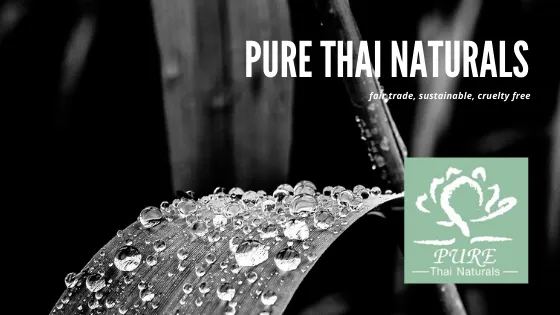

Join The Best Natural Health Community on Hive
